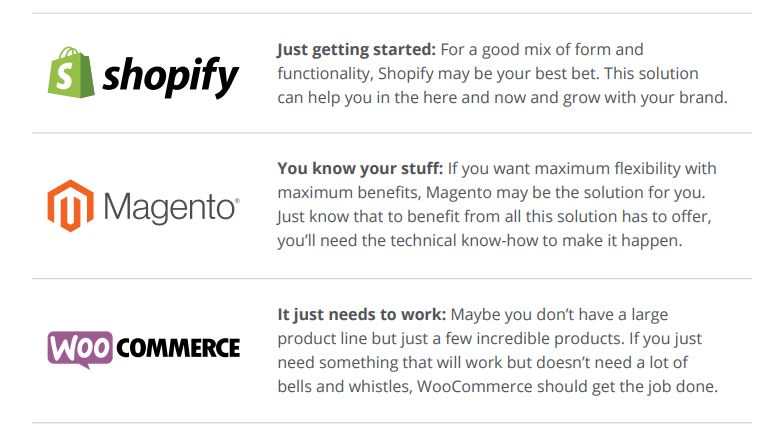COVID-19 has changed life as we know it. And despite what politicians and pundits might be saying, it’s probably not going away anytime soon. To survive in this strange new reality, small business owners need to prepare for the long haul. For many, that will mean moving business online or scaling up online activity.
If you’re feeling overwhelmed at the prospect of making the transition, pivoting in stages can help ease your mind. Keep reading for tips on making the transition to ecommerce.
Start with social media

Make good use of your social media channels. It’s how people are staying connected in these strange times. If you don’t have the staff or the know-how to create powerful social media campaigns, a digital marketing agency can help.
Your customers are already using social media, which makes your job easier—all you need to do is bring the message to the people, not the other way around.
Virtually any business can harness the power of social media to connect with customers and drive sales. Accounting firms are using social media platforms to keep customers up to date on how the CARES Act benefits small businesses and when (possibly) to expect stimulus checks.
Boutique shops are posting images of their products on Pinterest and Instagram and setting up online shops to sell their stuff. Nonprofits are keeping their donors engaged (and top of mind) through storytelling.
Decide on an ecommerce platform
Ecommerce helps businesses expand their reach and reduce overhead expenses—both essential in the age of coronavirus.
Building an online shop from scratch is a major project, and it’s a great way to make your site stand out. But if you need to launch a site quickly and don’t have the skills or staff to build out a site, there are lots of website builder options that will still give your customers a high-quality user experience.
SaaS platforms like Shopify are easy to use, require no coding, and let you launch a website in minutes. Or, if you’re already using WordPress, WooCommerce is a popular open-source ecommerce plugin for that platform.
Depending on the platform, you can reserve a domain name or use your existing one, integrate your social media accounts to expand online sales, create an online store, and more. Some platforms offer fulfillment services and payment processing, and others specialize in shipping and logistics.

Here are some things to consider:
- 1. Technical experience: Think about your existing resources and your needs and objectives before you decide on and ecommerce platform. If you go with one that’s popular but requires a high level of technical skill that’s beyond the ability of your current staff, you could end up with a problem on your hands.
- 2. Support: Murphy’s law says anything that can go wrong, will go wrong. Look for a vendor that provides 24-hour emergency support by chat, email, and phone
- 3. Hidden or unanticipated costs: Traditional and open-source ecommerce platforms require maintenance. Factor in these costs, especially if you have a large and complex site. If you go with a SaaS platform, maintenance is included in the fixed monthly fee.
- 4. Scalability: Even if you think (or hope) the transition to online is temporary, plan for the longer-term and choose an ecommerce platform that is scalable as your business grows.
- 5. SEO-friendliness: Choose a platform that allows you to use your own domain name, enables you to add a blog, and allows customers to leave reviews. This will help improve your site’s search engine rankings.
- 6. Mobile-friendliness: A 2019 survey found that 57 percent of consumers used a mobile retail app to find out more information about a product or service; 167 million people in the U.S. will buy products on mobile devices in 2020. Having a mobile-friendly site is no longer a nicety, it’s a necessity.
- Security: If you’ll be processing ecommerce payments on your site, security is even more vital. A security breach could be devastating to your business. Look for a platform with tight security protocols that protect your customers.

Decide what you’re going to sell
If the thought of putting your entire inventory or menu online makes your head spin, do it in stages instead—just make sure whatever platform you choose is scalable for your future needs.
Focus first on your top-selling services or products. This will get you up and running faster and give you time to work out website kinks and logistical challenges.

Images and content are essential when selling online. High-quality, keyword-optimized product descriptions, blogs, and web content will help your products rank higher in search results. Images and product videos will help give your viewers a more visceral experience.
It doesn’t take much to create a mini photo studio these days—you just need a few key pieces of lighting equipment and a camera that takes high-definition photos. But if you have a large inventory, producing images and writing product descriptions can be a big task. Consider hiring an SEO expert to help.
Let your customers know you’re online
Just as a new restaurant owner would advertise locally with flyers and discount coupons, you need to let your customers know your business is online. Here’s how to do it:
- 1. Create Google My Business (GMB) listings: Google My Business helps people find you through Google Maps and search. You’ll need to create a Google My Business account, then post your URL and photos of your products on your profile. Updating your profile at least weekly or multiple times a week can help improve your rankings. Note: Google My Business only serves businesses that make in-person contact with customers, not online-only businesses. If your business is strictly online, you can use Google ads and other sites, like Yelp.
- 2. Make an email announcement: If you’ve been collecting customer emails in person or through your existing site, send out an announcement of your new site with deals, offers, and information about new products. Email marketing is a great way to foster brand loyalty and boost sales. If you’ve overlooked this critical marketing strategy, now is the time to up your game.
- 3. Partner with influencers: If you’ve amassed a decent following on your social media channels, be sure to post about your online store. Also consider partnering up with influencers who have a large following of active community members on social media. Influencer marketing is a great way to reach your customers in a more authentic way.
Don’t do it alone—get expert help
There’s no getting around it. Moving your business online or scaling up will come with challenges and headaches. But making the transition could also be a blessing in disguise. Online shopping was already on the rise before COVID hit, a trend that is likely to continue long after the virus becomes a distant memory.
National Positions is ready to help. Our design, ecommerce, and digital marketing experts will create a visually stunning, content-rich mobile-friendly website that drives traffic to your site and boosts sales during (and after) this ecommerce wave. Contact us today to learn more and stay tuned for more content to help you through the rest of 2020!